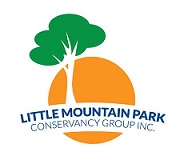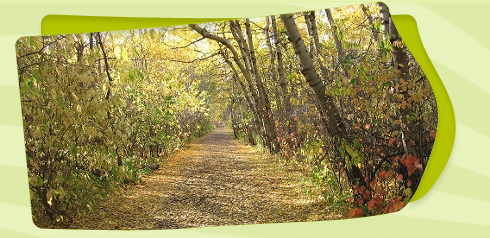Dec. 17 2020
Urban green spaces and health
A review of evidence. 2016
Copenhagen: WHO Regional Office for Europe, 2016. © World Health Organization 2016
EDITORS:
Andrey I. Egorov 1, 2 *, Pierpaolo Mudu 1, Matthias Braubach 1 and Marco Martuzzi 1
1 World Health Organization, European Centre for Environment and Health, Bonn, Germany
2 United States Environmental Protection Agency, National Health and Environmental Effects Research Laboratory, Chapel Hill, N.C.
Concluding statement from this document:
A city of well?connected, attractive green spaces that offer safe opportunities for urban residents for active mobility and sports as well as for stress recovery, recreation and social contact, is likely to be more resilient to extreme environmental events, such as heat waves (due to the mitigation of urban heat island effect) and extreme rainfall (due to reduced surface run?off). Such a city is also likely to have healthier citizens, reducing demands on health services and contributing to a stronger economy.
https://www.euro.who.int/__data/assets/pdf_file/0005/321971/Urban-green-spaces-and-health-review-evidence.pdf
Primary authors
Section 2:
Catharine Ward Thompson and Eva Silveirinha de Oliveira
OPENspace Research Centre, University of Edinburgh, United Kingdom
Section 3:
Benedict W. Wheeler and Michael H. Depledge
European Centre for Environment and Human Health, University of Exeter Medical School, United Kingdom
Section 4:
Matilda Annerstedt van den Bosch
Swedish University of Agricultural Sciences, SLU, Alnarp, and Lund University, Sweden
(Other contributors... contributed their expertise to the development of recommendations on health?relevant WHO indicators of urban green space and commented on the draft report.)
Table of contents
1. INTRODUCTION.................................................................................................................................. 1
2. EVIDENCE ON HEALTH BENEFITS OF URBAN GREEN SPACES ............................................................. 3
2.1 Definitions of urban green space ................................................................................................. 3
2.2 Pathways linking urban green space to improved health and well?being.................................... 3
2.2.1 Overview of pathways to health ........................................................................................... 3
2.2.2 Improved relaxation and restoration .................................................................................... 4
2.2.3 Improved social capital ......................................................................................................... 5 2.2.4 Improved functioning of the immune system ....................................................................... 5
2.2.5 Enhanced physical activity, improved fitness and reduced obesity ...................................... 5
2.2.6 Anthropogenic noise buffering and production of natural sounds ....................................... 7
2.2.7 Reduced exposure to air pollution ........................................................................................ 8
2.2.8 Reduction of the urban heat island effect............................................................................. 8
2.2.9 Enhanced pro?environmental behaviour .............................................................................. 8
2.2.10 Optimized exposure to sunlight and improved sleep.......................................................... 9
2.3 Evidence of health benefits of green spaces................................................................................ 9
2.3.1 Improved mental health and cognitive function ................................................................... 9
2.3.2 Reduced cardiovascular morbidity...................................................................................... 10
2.3.3 Reduced prevalence of type 2 diabetes .............................................................................. 11
2.3.4 Improved pregnancy outcomes .......................................................................................... 11
2.3.5 Reduced. mortality..................................................................................................11
2.4 Mechanisms of potential pathogenic effects of green spaces ................................................... 12
2.4.1 Increased exposure to air pollutants................................................................................... 12
2.4.2 Risk of allergies and asthma ................................................................................................ 12 2.4.3 Exposure to pesticides and herbicides ................................................................................ 12
2.4.4 Exposure to disease vectors and zoonotic infections.......................................................... 13
2.4.5 Accidental injuries .................................................................................................. 13
2.4.6 Excessive exposure to UV radiation .................................................................................... 13
2.4.7 Vulnerability to crime.......................................................................................................... 13 2.5 Characteristics of urban green space associated with specific health benefits or hazards........ 14
2.5.1 Perceptions of green space accessibility and quality .......................................................... 14
2.5.2 Size of green space.......................................................................................................15 2.5.3 Presence of specific facilities for certain activities .............................................................. 15
2.5.4 Tree cover and canopy density ........................................................................................... 15
2.6 Differential health benefits of green spaces in specific population groups ............................... 16
2.6.1 Women.............................................................................................16
2.6.2 Children and adolescents .........................................................................................17
2.6.3 Older adults.................................................................................................... 17
2.6.4 Deprived subpopulations and minority groups ................................................................... 18
2.6.5 Populations of various countries and geographic regions................................................... 19
2.7 Co?benefits of urban green spaces unrelated to health effects ................................................. 19
3. INDICATORS OF URBAN GREEN SPACE AVAILABILITY, ACCESSIBILITY AND USAGE,.......AND ASSESSMENT OF THEIR HEALTH RELEVANCE ............................................................................... 21
3.1 Classification of urban green space indicators ........................................................................... 21
3.2 Green space characteristics that can be incorporated in definitions of indicators .................... 21
3.3 Indicators of green space availability ......................................................................................... 22
3.3.1 Greenness, measured by Normalised Difference Vegetation Index (NDVI) ........................ 22
3.3.2 Density or percentage of green space by area .................................................................... 23
3.3.3 Measures of street trees and other streetscape greenery.................................................. 24
3.4 Indicators of green space accessibility ....................................................................................... 25
3.4.1 Proximity to an urban park or geographically defined green space.................................... 25
3.4.2 Proportion of green space or greenness within a certain distance from residence............ 26
3.4.3 Perception?based measures of green space accessibility ................................................... 27
3.5 Indicators of green space usage..............................................................................................28
3.6 Summary and recommendations for a health?relevant approach to selecting and using indicators of urban green space ...................................................................................... 29
3.6.1 Summary of considerations for selecting indicators ........................................................... 29
3.6.2 Recommendations for a primary indicator ......................................................................... 30
3.6.3 Recommendations for secondary indicators....................................................................... 31
4. PROPOSED INDICATOR AND A DATA ANALYSIS TOOL KIT................................................................ 32
4.1. Summary of indicator development and evaluation................................................................. 32
4.2. Data requirements for a WHO Urban Green Space Indicator ................................................... 33
4.2.1. Land use data for EU countries .......................................................................................... 33
4.2.2. Land cover/use data for non?EU countries......................................................................... 34
4.2.3 Population data................................................................................................... 34
4.3. Methodology............................................................................... 34
4.3.1 General overview ............................................................................................. 34
4.3.2 Basic method....................................................................................................................... 36
4.3.3. Complex method................................................................................................................ 38
4.4 Summary of the proposed indicator .......................................................................................... 39
CONCLUSIONS..........................................................................40
6.LITERATURE.....................................................................................42
APPENDIX 1. Examples of definitions related to assessing green space availability or accessibility .... 64
APPENDIX 2. The availability of key urban land use data for the Member States of the WHO European Region ......................................................................................... 65
APPENDIX 3: A tool kit for assessing green space accessibility – detailed step?by?step procedure..... 67



